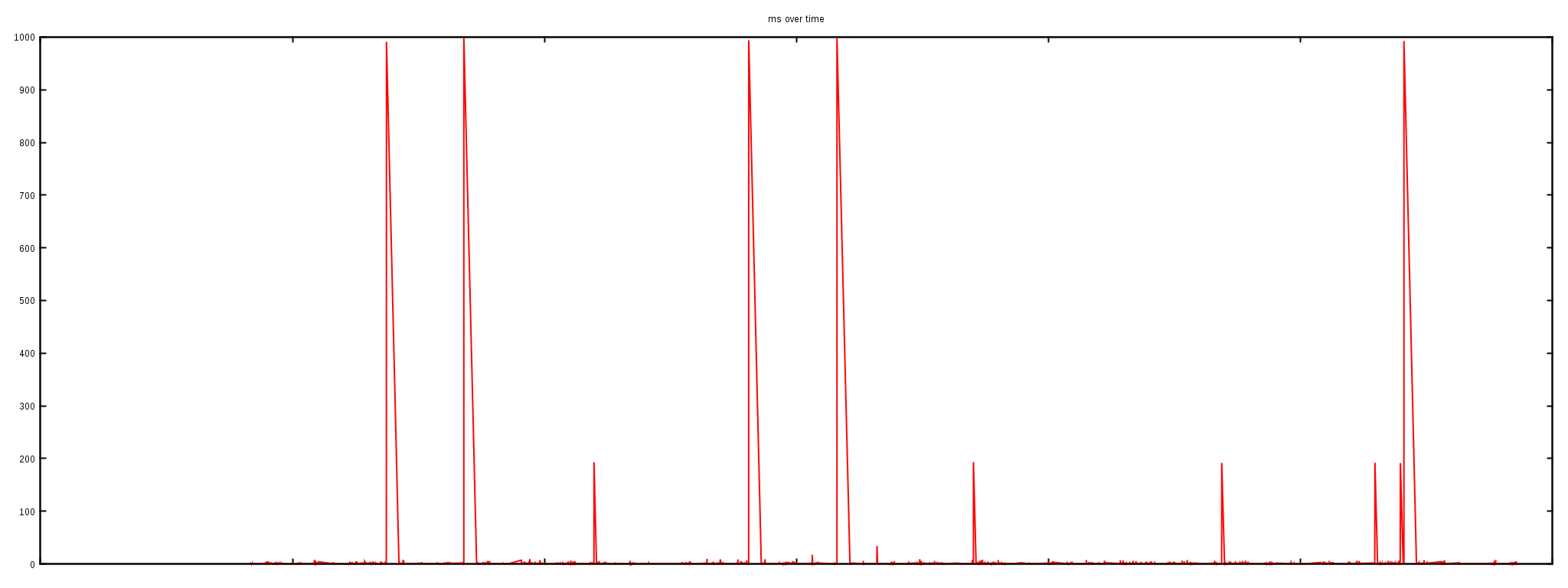Worth Reading: Connecting the next billion users


The post Worth Reading: Connecting the next billion users appeared first on 'net work.


The post Worth Reading: Connecting the next billion users appeared first on 'net work.
A customer reported an unusual problem with our CloudFlare CDN: our servers were responding to some HTTP requests slowly. Extremely slowly. 30 seconds slowly. This happened very rarely and wasn't easily reproducible. To make things worse all our usual monitoring hadn't caught the problem. At the application layer everything was fine: our NGINX servers were not reporting any long running requests.
Time to send in The Wolf.
He solves problems.
First, we attempted to reproduce what the customer reported—long HTTP responses. Here is a chart of of test HTTP requests time measured against our CDN:

We ran thousands of HTTP queries against one server over a couple of hours. Almost all the requests finished in milliseconds, but, as you can clearly, see 5 requests out of thousands took as long as 1000ms to finish. When debugging network problems the delays of 1s, 30s are very characteristic. They may indicate packet loss since the SYN packets are usually retransmitted at times 1s, 3s, 7s, 15, 31s.
At first we thought the spikes in HTTP load times might indicate some sort of network problem. To be sure we ran ICMP pings against two IPs over many Continue reading
 IT professionals need to expand their horizons to IoT and the cloud.
IT professionals need to expand their horizons to IoT and the cloud.
One of the engineers listening to my DMVPN webinars sent me a follow-up question (yes, I always try to reply to them) asking how to implement direct Internet access from the spoke sites (aka local exit) in combination with split default routing you have to use in DMVPN Phase 2 or Phase 3 networks.
It’s really simple: either you have a design requirement that requires split default routing, or you don’t.
Read more ... Cole Crawford’s Open DCRE is bringing new management tools to data centers.
Cole Crawford’s Open DCRE is bringing new management tools to data centers.
Cisco has just announced CCIE Data Center Written and Lab Exam Content Updates.Important dates for the changes are:
Key hardware changes in the v2.0 blueprint are:
Key technical topic changes in the v2.0 blueprint are:
More details to come!
Extreme Networks is rolling out new 802.11ac Wave 2 APs. Wave 2 enables greater throughput than Wave 1, and incorporates additional enhancements such as MU-MIMO.
The post Extreme Networks Debuts 802.11ac Wave 2 APs appeared first on Packet Pushers.